If you need to point a few key financial ratios or measures out to a board, to your investors, or to other members of management, we suggest a few to start with.
Standard financial statements include the balance sheet, income statement, and cash flow statements. Ratios can be used to compare financial statements among companies and provide benchmarks.
Measures
Financial statement measures used in ratios:
| Total assets | Resources the company can use in the future. Your checking account, your vehicles and equipment, amounts due to you from others, etc.
|
| Total liabilities | Obligations the company has to others. Bank loans, amounts due to vendors (accounts payable) or employees (accrued payroll), etc.
|
| Gross profit | The difference or margin between product and service revenue and product and service direct costs for a period. You should be selling products or services at a profit (else, let’s talk) – meaning the amount you pay for the product or service is less than you charge others. The total of profits for a period is called your gross profit. This can also be thought of as the amount left over to pay for fixed/overhead costs such as administrative salaries, rent, supplies, etc.
|
| Net income | Excess of all revenues over all expenses. If positive, this amount can go into your bank account to save for future expenses or can be paid out to owners. |
Ratios
Basics ratios, sorted by type:
Profitability: measures that show how much money your company is generating.
- Profit margin: What percentage of your sales is left after paying for your product or service. Take gross profit divided by sales. The higher this percent is, the less of the product you need to sell to pay for your other expenses. Companies can accept a small profit margin if they sell a lot of products.
- Breakeven point: If you know how much you make per product sold, you can calculate how many products you would need to sell to pay for other expenses, like rent, administrative salaries, etc. Is this number reasonable given your current distribution channels and market? If not, you may want to reconsider your profit margins or the feasibility of the product.
- Return on equity (ROE) or return on investment (ROI): If you have owners/investors putting money into your company, they want to know how much income is generated by each dollar they put in. Calculate ROE or ROI by taking net income divided by equity.
Liquidity: measures that show how quickly the company can bring in cash and pay its obligations.
- Cash flow from operations: The difference between cash that comes in from customers and cash that goes out to pay vendors, employees, and other recurring operational costs. Cash from operations does not include cash you spend or make on investments or that you receive or pay to banks or owners. Financial statements usually calculate cash from operations by starting with net income and adjusting for changes in assets and liabilities (referred to as the indirect method). You want this number to be positive.
- AR turnover and days in AR: One of the biggest drivers of successful cash flow is how quickly you collect amounts due to you from others (“accounts receivable” or “AR”). Take sales for a period divided by the average AR balance for that same period. This is your AR turnover, or how many times the AR balance “turns over” in a year. Take 365 divided by the AR turnover to calculate the number of days sales remain in AR. The higher your sales compared to average AR, the better this measure is and the more able you are to pay your employees and vendors in a timely manner.
Solvency: measures that show how capable the company is of meeting its obligations to others.
- Current ratio: How capable you are to meet obligations that will arise in the next year. Calculated by taking current assets (sometimes excluding prepaids and inventory) divided by current liabilities. This number should exceed 1:1 and is preferably above 2:1 or 3:1.
- Number of months of expenses: A “back of the envelope” method to determine how capable your Company is of weathering unanticipated financial storms. Take total expenses for the year, divided by 12 months. This is your average monthly expense. Then take your retained earnings balance (or net assets in the case of nonprofits) and divide by the average monthly expense figure. The result is the number of months you could continue operations without any additional funding or revenue. The target for this number depends on your growth stage, industry, and risk tolerance, but most companies like to keep at least 3 months in reserve and as much as 12 months or more if saving for a future project.
For more information about this topic contact Larson & Company today.



